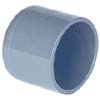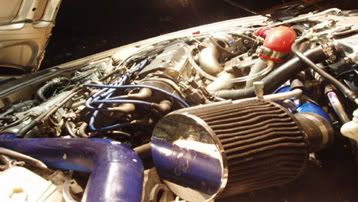OKay everyone since noone hasnt covered this im going to. In order to make sure that everyone is up to speed like me i figure why not. Sure so you say you want boost and now you have it.
But are you sure that you are running at peak top shape and that your precious boost isnt being well used and not wasted. Well fear not im going to show you how to boostleak your car .
Now a boostleak is when you have a leak of optimized pressure that supposed to be optimal for the car to run properly and get the power that its properly desired. Any leak in boost is bad when it comes to turbo and even N/a cars. It can trigger a number of things that would make your car run like crap. It can mainly affect things like:
-gas-mileage
-spark blow out consistanly cut due to computer safeguarding itself over a certain limit in the rpm range.
-fuel delivery
-computer calibration pulled timing
=basically lowered hp and torque
overall in time engine damage
So to counteract it lets perform a boostleak test. Here are some of the tools you will need:
1 pvc endcap it should look like this

1 silicon coupler and bicycle valve stem
all parts can be found from home depot and autozone and lets not forget the jb-quick for a nice seal to make sure there isnt any leaks
heres what yoru end product should look like when your down. You must first drill a hole in the pvc end-cap wide enough for the valve bicycle stem to fit in through nice and snug.
Then jbquick weld the inside and outside of the pvs end-cap. Then place the pvc end-cap insice the pvc silicon coupler. When your down it should look like this

Then now we are ready to proceed. Now you attach the end of the open side of the boostleak tester to your inlet side of the turbo like so
You then want to attach a nice air compressor to it like so
 Once you get to a certain optimized pressure say 5-6 psi on your boostguage or more should need no-more than 7 psi.
Once you get to a certain optimized pressure say 5-6 psi on your boostguage or more should need no-more than 7 psi.
But and I quote :BOOSTLEAK TEST THE CAR WITH THE CAR OFF!!! DO NOT I REPEAT DO NOT DO IT WITH THE CAR ON. I will not be responsible for someone elses screw up you been warned.
Now lets finish this up when your boostleak testing when you reach a certain psi nomore than 7 psi needed. You leave the boostleak tester on the turbo clamp it down as tight as the clamp would allow with the air compressor attached to it. You shouldnt have any leaks on the tester. While its pumping air in the chargepipe you should check for any distinctive hissing sounds.
Distinctive hissing sounds and slight air openings in the system are considered boostleaks. You can prevent boostleaks by getting better couplers and t-bolt clamps which you can find at your local autopart store . Once your done you shouldnt hear any leaks or feel any leaks once your done and get your car set you shouldnt have any problems holding boost. Dont forget to tightendown what you gotta tighten down and make sure theres no leaks in the system. Goodluck and be safe I ask for a sticky. This is my contribution to the cb7tuner community to make sure everyones running right.
. Once your done you shouldnt hear any leaks or feel any leaks once your done and get your car set you shouldnt have any problems holding boost. Dont forget to tightendown what you gotta tighten down and make sure theres no leaks in the system. Goodluck and be safe I ask for a sticky. This is my contribution to the cb7tuner community to make sure everyones running right.
But are you sure that you are running at peak top shape and that your precious boost isnt being well used and not wasted. Well fear not im going to show you how to boostleak your car .
Now a boostleak is when you have a leak of optimized pressure that supposed to be optimal for the car to run properly and get the power that its properly desired. Any leak in boost is bad when it comes to turbo and even N/a cars. It can trigger a number of things that would make your car run like crap. It can mainly affect things like:
-gas-mileage
-spark blow out consistanly cut due to computer safeguarding itself over a certain limit in the rpm range.
-fuel delivery
-computer calibration pulled timing
=basically lowered hp and torque
overall in time engine damage
So to counteract it lets perform a boostleak test. Here are some of the tools you will need:
1 pvc endcap it should look like this

1 silicon coupler and bicycle valve stem
all parts can be found from home depot and autozone and lets not forget the jb-quick for a nice seal to make sure there isnt any leaks
heres what yoru end product should look like when your down. You must first drill a hole in the pvc end-cap wide enough for the valve bicycle stem to fit in through nice and snug.
Then jbquick weld the inside and outside of the pvs end-cap. Then place the pvc end-cap insice the pvc silicon coupler. When your down it should look like this

Then now we are ready to proceed. Now you attach the end of the open side of the boostleak tester to your inlet side of the turbo like so

You then want to attach a nice air compressor to it like so
 Once you get to a certain optimized pressure say 5-6 psi on your boostguage or more should need no-more than 7 psi.
Once you get to a certain optimized pressure say 5-6 psi on your boostguage or more should need no-more than 7 psi. But and I quote :BOOSTLEAK TEST THE CAR WITH THE CAR OFF!!! DO NOT I REPEAT DO NOT DO IT WITH THE CAR ON. I will not be responsible for someone elses screw up you been warned.
Now lets finish this up when your boostleak testing when you reach a certain psi nomore than 7 psi needed. You leave the boostleak tester on the turbo clamp it down as tight as the clamp would allow with the air compressor attached to it. You shouldnt have any leaks on the tester. While its pumping air in the chargepipe you should check for any distinctive hissing sounds.
Distinctive hissing sounds and slight air openings in the system are considered boostleaks. You can prevent boostleaks by getting better couplers and t-bolt clamps which you can find at your local autopart store
 . Once your done you shouldnt hear any leaks or feel any leaks once your done and get your car set you shouldnt have any problems holding boost. Dont forget to tightendown what you gotta tighten down and make sure theres no leaks in the system. Goodluck and be safe I ask for a sticky. This is my contribution to the cb7tuner community to make sure everyones running right.
. Once your done you shouldnt hear any leaks or feel any leaks once your done and get your car set you shouldnt have any problems holding boost. Dont forget to tightendown what you gotta tighten down and make sure theres no leaks in the system. Goodluck and be safe I ask for a sticky. This is my contribution to the cb7tuner community to make sure everyones running right.










Comment